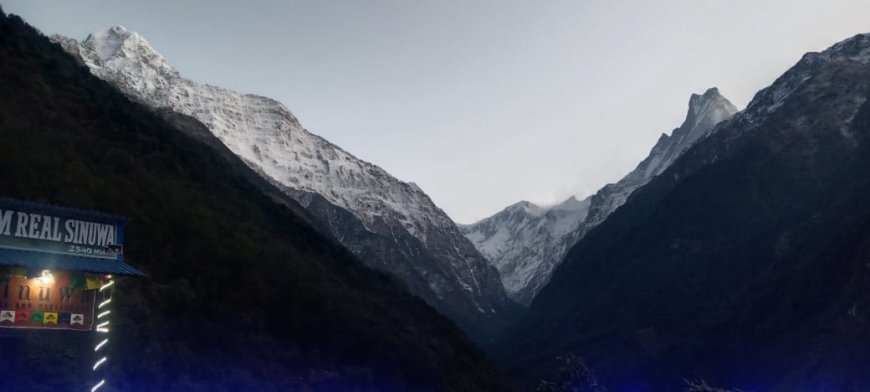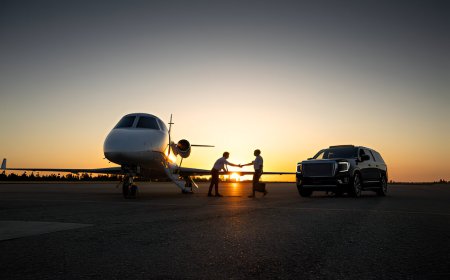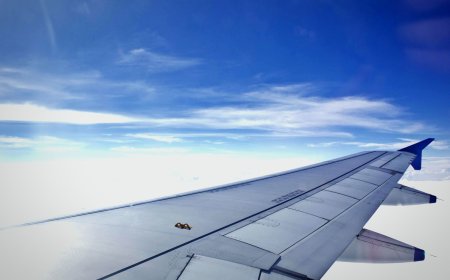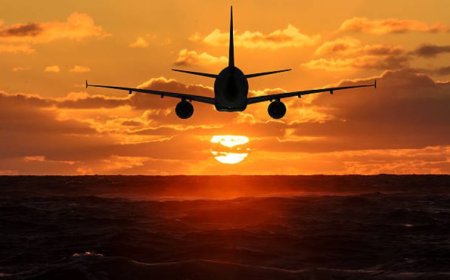Mastering the Annapurna Circuit With Some Smart Planning
Trek the legendary Annapurna Circuit through remote villages, lush forests, and high alpine passes in the heart of the Himalayas.

TheAnnapurna Circuit isn't most effective certainly one of Nepals first-rate treks its one of the internationals most iconic adventures. Ranging through lush valleys, high mountain forests, stark lands, and colourful villages, set against the backdrop of the breathtaking traverse of the Thorong La bypass (416m). Whether or not youre a pro trekker or just hungry for an adventure, trekking the Annapurna Circuit calls for more than just gumption it requires careful The environment is inspiring; however, the trek itself isn't any cakewalk.
Its 160-230 km (depending on which path you pick) and takes between 12 and 21 days. Along the way, you'll come across altitude changes, erratic climate, cultural immersion, and a physical call for those demanding situations, your staying power. But with the proper planning, gear, pacing, and mindset, what follows becomes one of the greatest experiences of your life.
This post dismantles six preparation tactics to enable you to take the Annapurna Circuit with ease. From bodily education and gear selection to trail logistics and mental fortitude, every phase affords down-to-earth guidance informed by real hiking experience and not simply guidebooks.
No matter in case you desire to walk it on your own or supported hikes, in the top time or shoulder seasons, the following recommendations will keep you from making common errors, so you can genuinely have the journey of a lifetime. Heres how to train smart and conquer this epic trek, one high pass at a time.
Condition Your Body for Altitude and Stamina
Hiking the Annapurna Circuit is a matter of consistent physical endurance. Youll hike 68 hours every day, often climbing or descending, at high altitudes. Start training 6eight weeks before your trek. Concentrate on aerobic (trekking, jogging, stair climbing), strength (legs, core), and flexibility. If available, perform altitude hikes to imitate skinny air. Some degree of fitness makes the process more comfortable, helps prevent injury, and makes the journey more pleasurable than just difficult.
Pack Smart, Not Heavy
What you have in your pack on the trail impacts the way you perform. A solo hiker's backpack should not exceed 10-12 kg; for a porter-supported route, 15 kg. No. 1 in terms of priority are layered clothes, a good, sturdy pair of boots, a good sleeping bag(- -10 C), rainwear, and water purifying tablets. Lose the overkill: books or a big camera. Light gear results in less fatigue and greater mobility, especially at high altitude. Be efficient but not underprepared.
Plan Acclimatization Days Strategically
At 3,000m plus, altitude sickness is very much a reality, and Thorong La Pass is over 5,400m up: acclimatization is not a luxury it is a matter of life and death. Allow at least two rest days - generally in Manang and either Pisang or Yak Kharka. Use the next few days for short hikes, staying hydrated, and being attentive to your body. Climb high, sleep low. Pushing the ascent before youve acclimatized can damage your trek or worse.
Make yourself acquainted with the path and Seasonal weather.
The Annapurna Circuit may be hiked in either direction (most people hike counter-clockwise). Memorize the map, take a look at the names of villages, and apprehend the distances among teahouses. Weather for the seasons: October to November for clean skies, March to April for blooms and heat. Avoid monsoon (JuneAugust) due to landslides. Download maps. Use me or FarOut offline maps and then use paper maps and local advice to get updated trail conditions on the spot.
Budget Wisely and Carry Cash
The trip may seem far-flung, but it comes with a daily budget. Plan to spend $2540 a day paying for food, rooms, and occasionally hot showers or Wi-Fi. ATMs are few beyond Manang, so bring enough cash with you from Pokhara or Kathmandu. Regimes like ACAP and TIMS are necessary. Tack on a piece of mind for snacks, tools upkeep, or emergencies. Monetary readiness is the secret to a smooth and strain-free trek.
Condition Your Mind As Well As Your Gear
It is equally important to prepare in the mind as in the body. The Annapurna Circuit will also really challenge your patience be it with long days of climbing, col,d cold nights, and utterly fickle weather. Find discomfort, yield to it, and then taste the hot sex as slowly as you can. Keep a caseful attitude when things don't go as planned or it's difficult. Mingle with the locals, soak up the ambience, and ruminate each evening. Mastery has nothing to do with speed its all about being present, humble, and willing to let the mountains be your guide.
How to put together the Annapurna Circuit?
To get geared up for the Annapurna Circuit, educate at least 6-eight weeks earlier than. Paintings on cardio, staying power hikes, energy education (mainly legs and core), and versatility. Go hiking with a heavy backpack. Read up on altitude sickness, pack accordingly layers, gear, permits and break in those hiking boots. Mental prep is key, too create patience and a sustainable trekking rhythm. Also, consider your acclimatization days and logistics, including. TIMS/ACAP permits and bookings in teahouses in high season.
What Level of Fitness Is Required for the Annapurna Circuit?
You need to be in fairly decent shape, though. You dont have to be an athlete, but the trek requires 5-8 hours of walking a day for 2-3 weeks, and it includes high-altitude passes like Thorong La (5,416 meters). Regular hiking, know how to climb hills with a backpack on, and cardio. Mental toughness is important here, too, all the more so at high altitude. Its a straightforward climb that many beginners get to the top of with steady hiking and intelligent acclimatization.
How to attain the Annapurna Circuit?
The same old northern circuit heads up the Marsy?ngdi Valley, with the Besisahar or Bhulbhule the everyday start line, both on hand by bus or jeep from Kathmandu or Pokhara (610 hours). Some hikers starting from Chame would like a shorter version. The trail concludes around Jomsom, Tatopani, or Nayapul, all of which have transportation to Pokhara. Modern road construction has cut down on the traditional course, although access by vehicle is now available through various access points.
What is the maximum beautiful section Of The Annapurna Circuit?
Maximum trekkers will tell you the maximum beautiful component is from Manang to Thorong. Annapurna Base Camp Trek. This section offers surreal landscapes ice-hewn valleys, yak pastures, marquee-worthy cliffs and pure mountain views of Annapurna II, III, IV, and Gangapurna. The view towards Thorong La is, particularly at sunrise, unforgettable. Others say the drop into Muktinath and the windy Kali Gandaki Valley is equally stunning, where spiritual sites are combined with desert-like scenery.






































